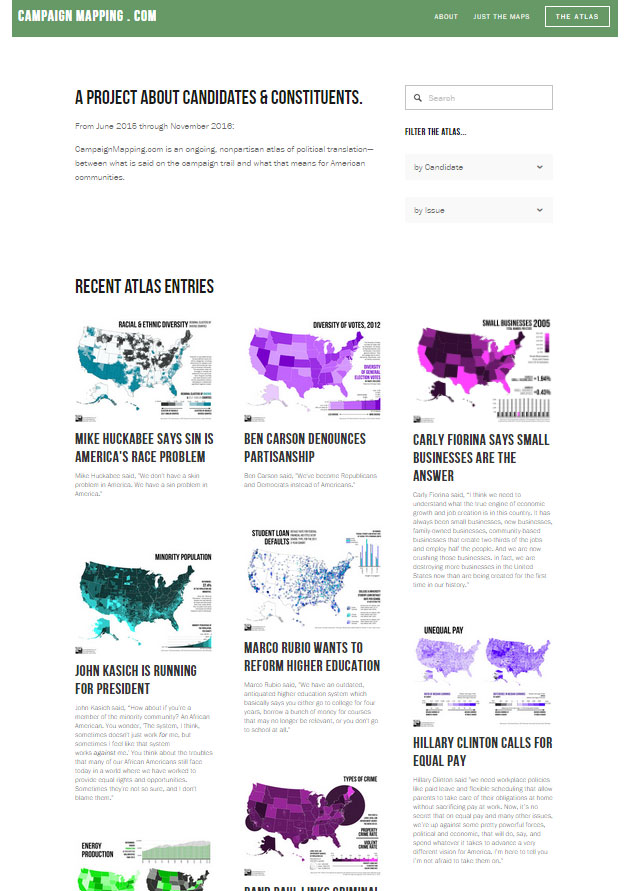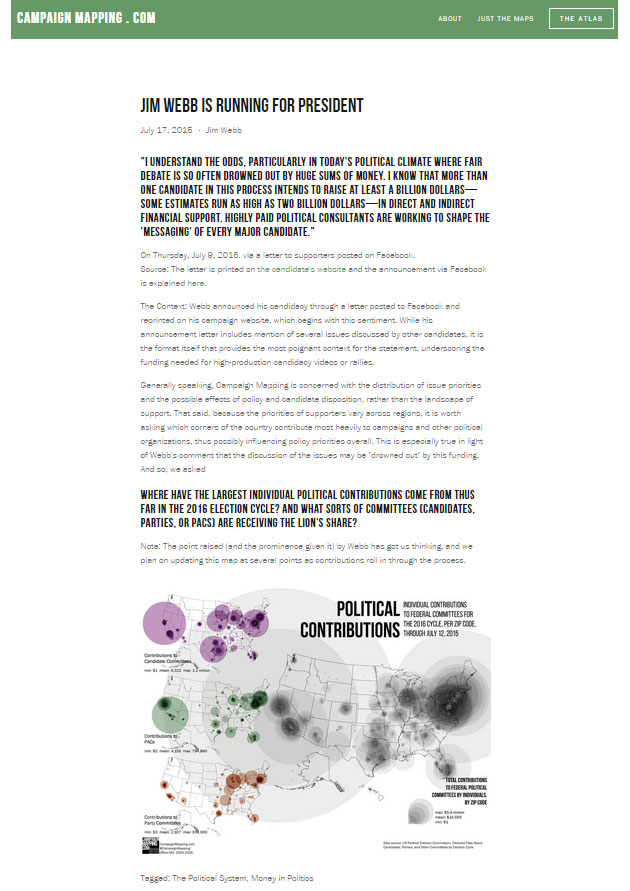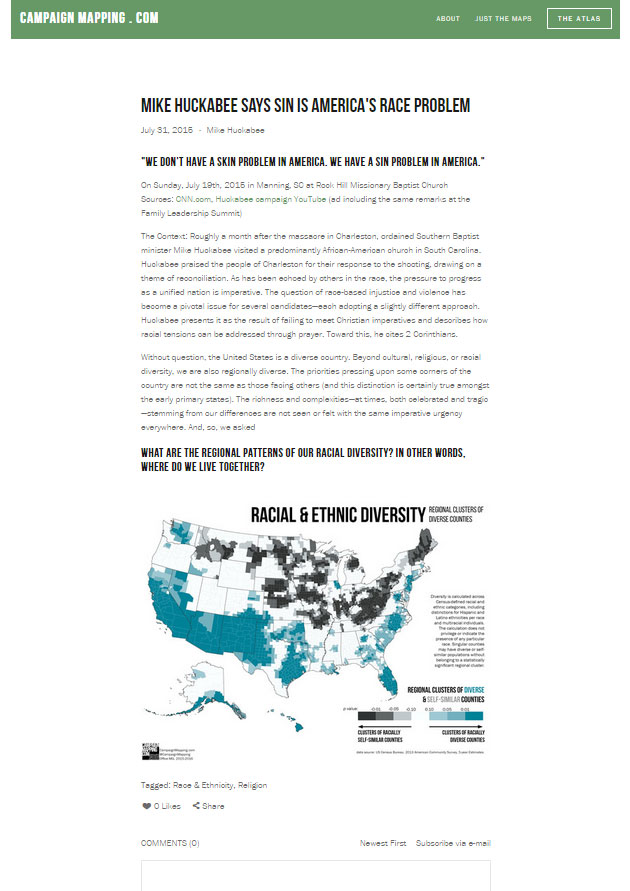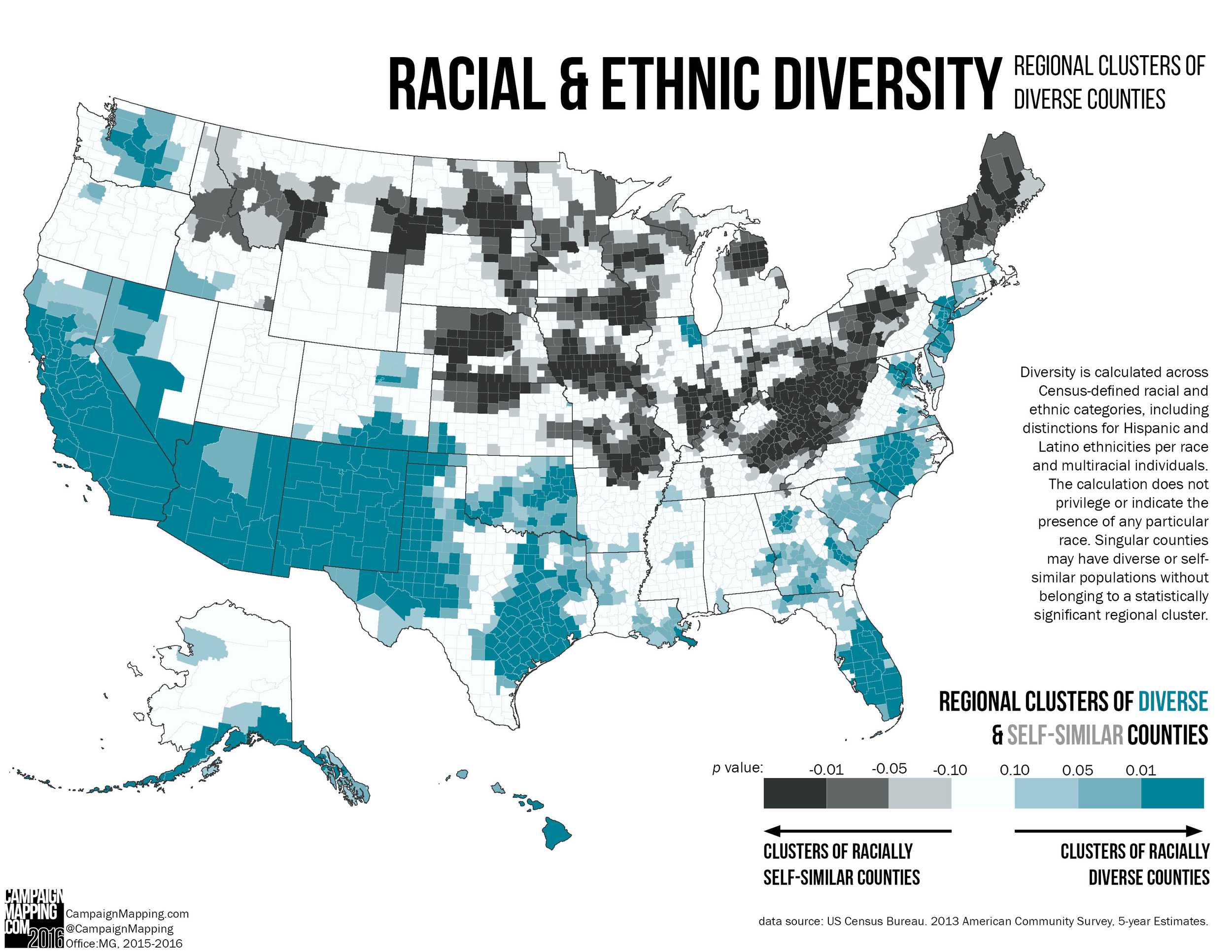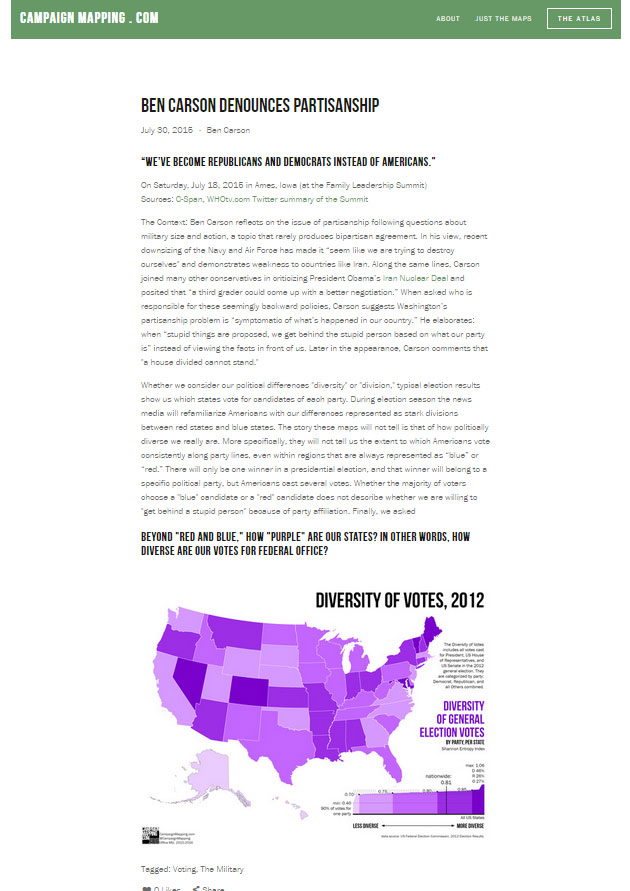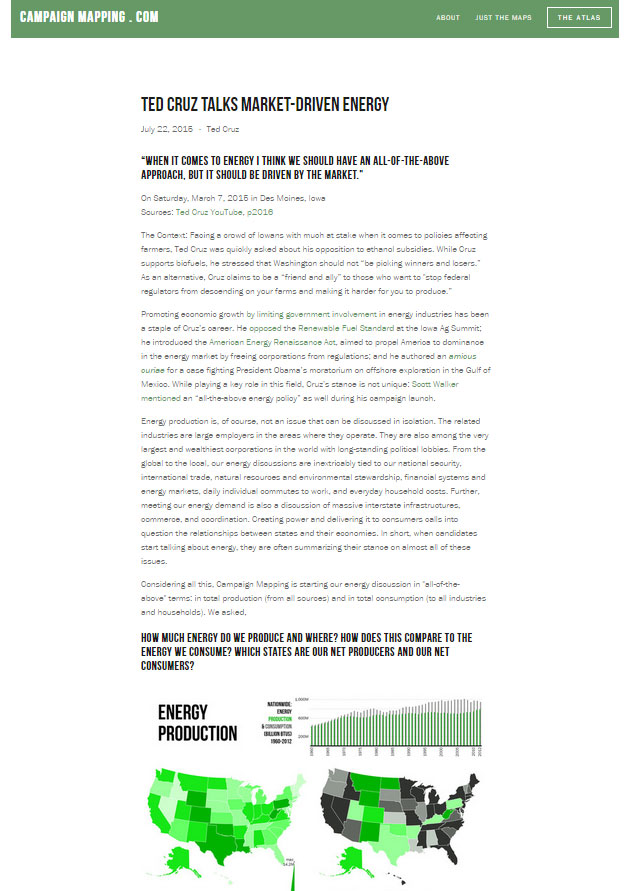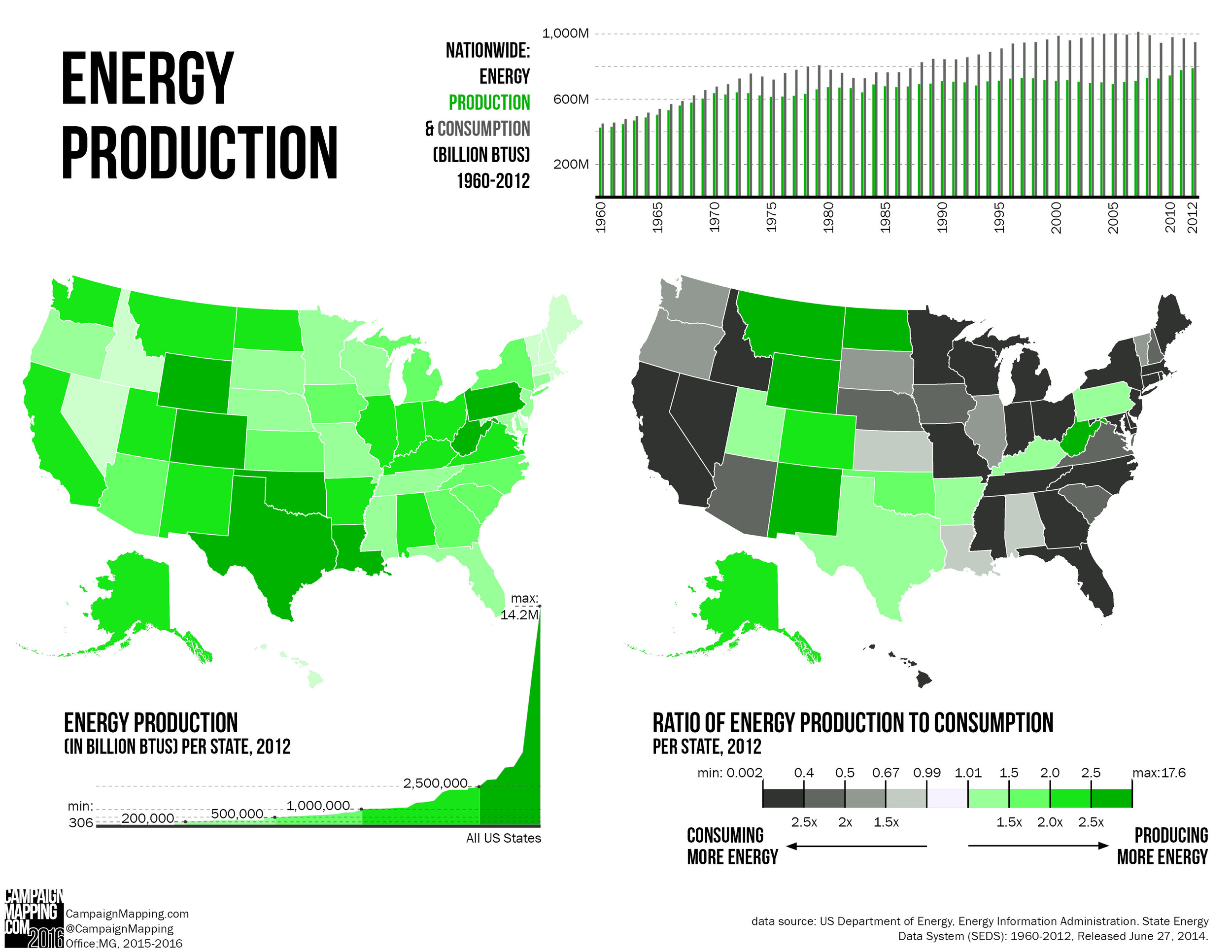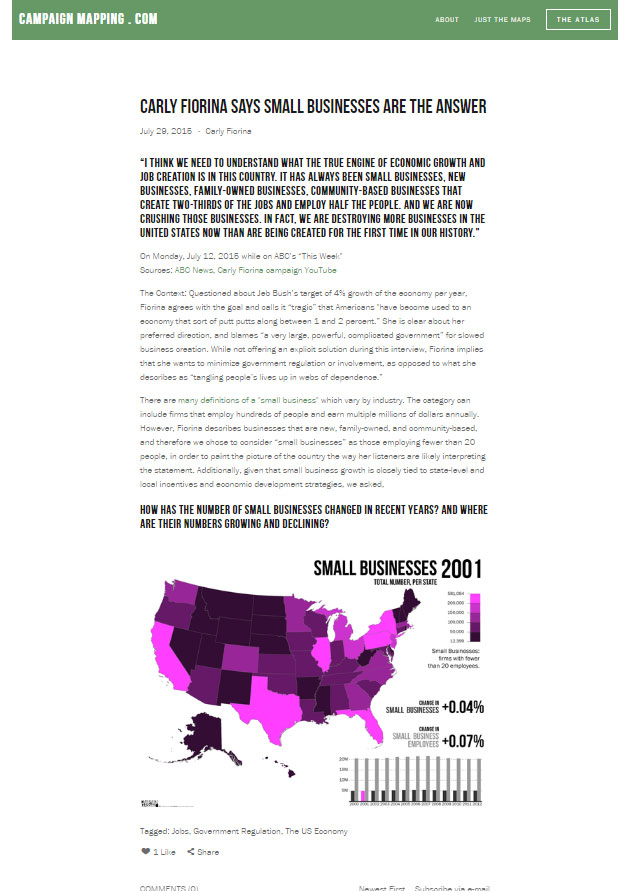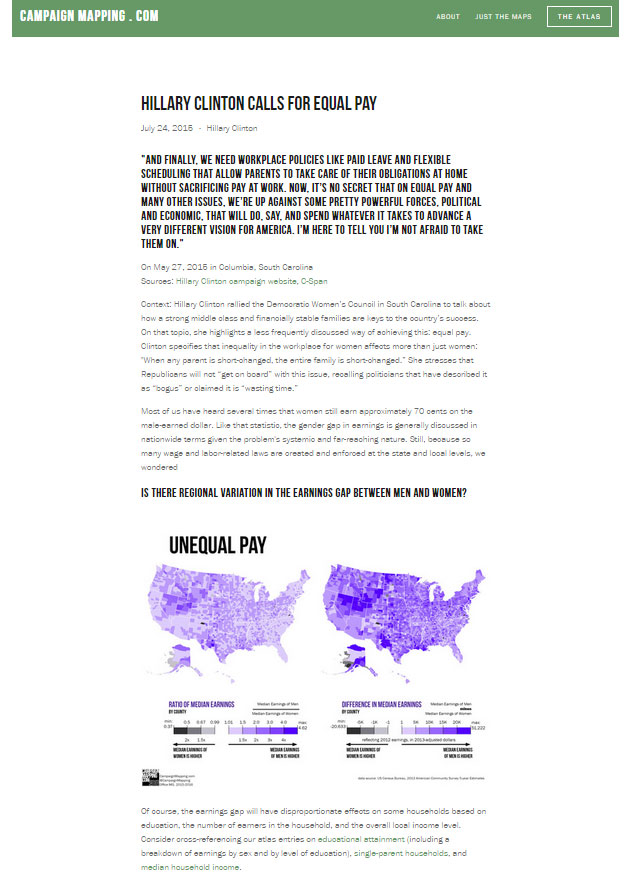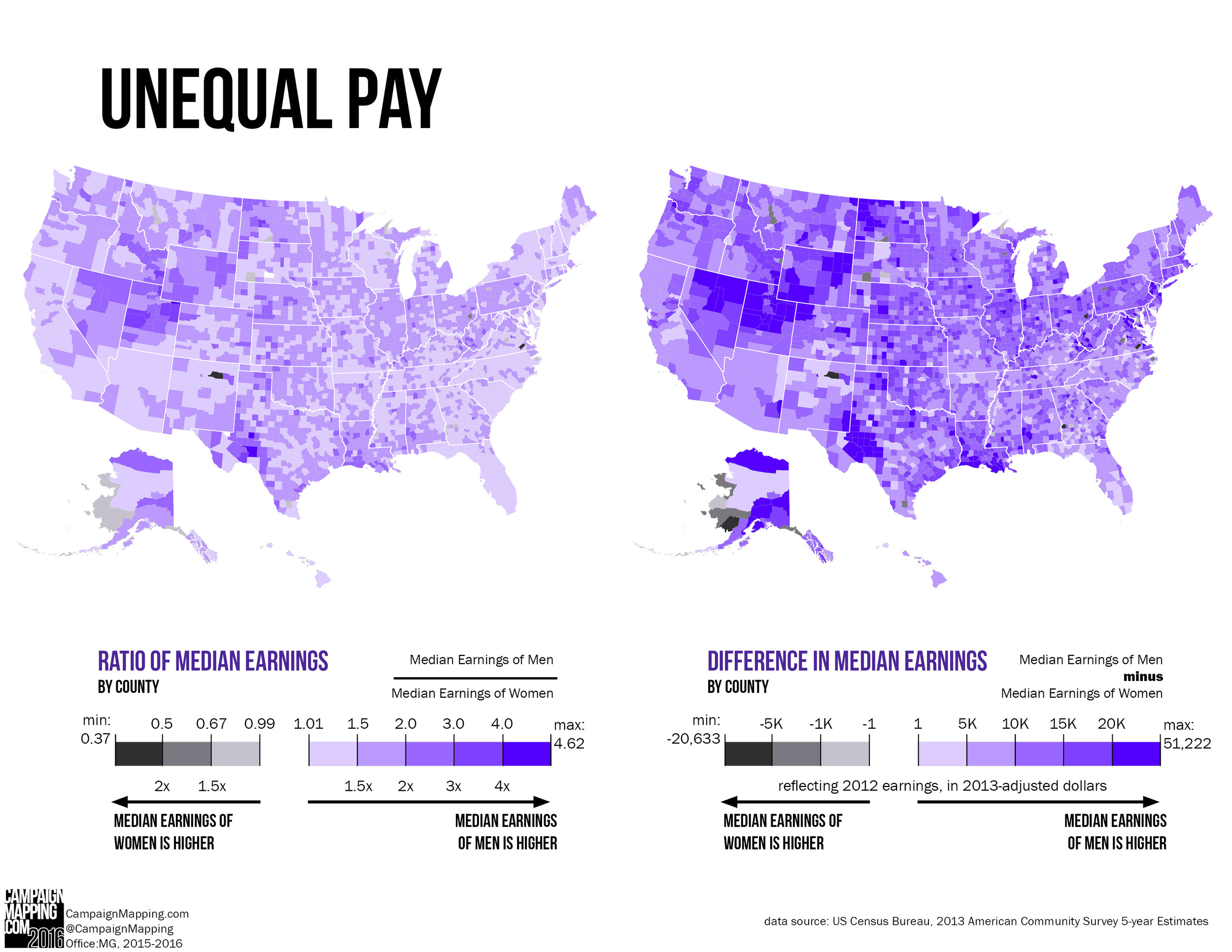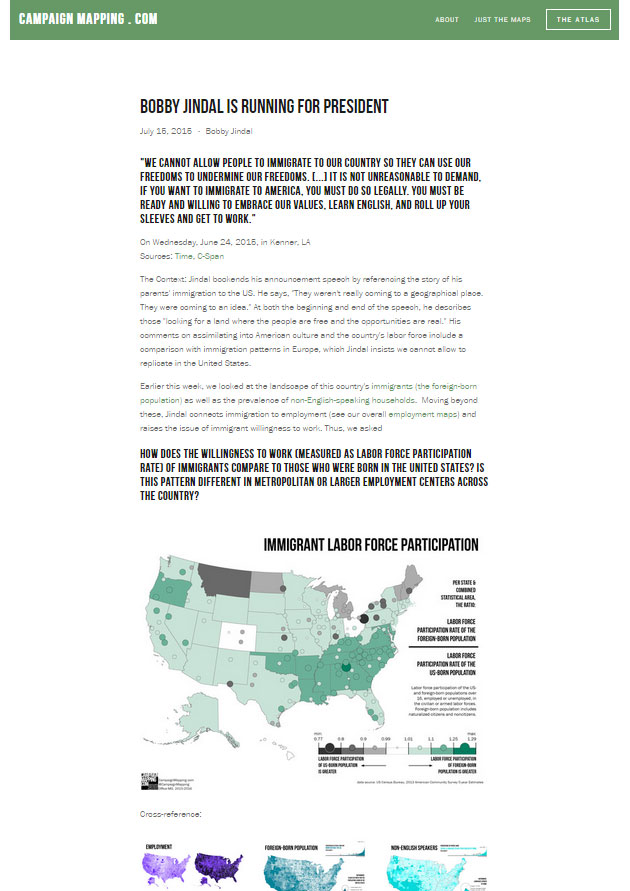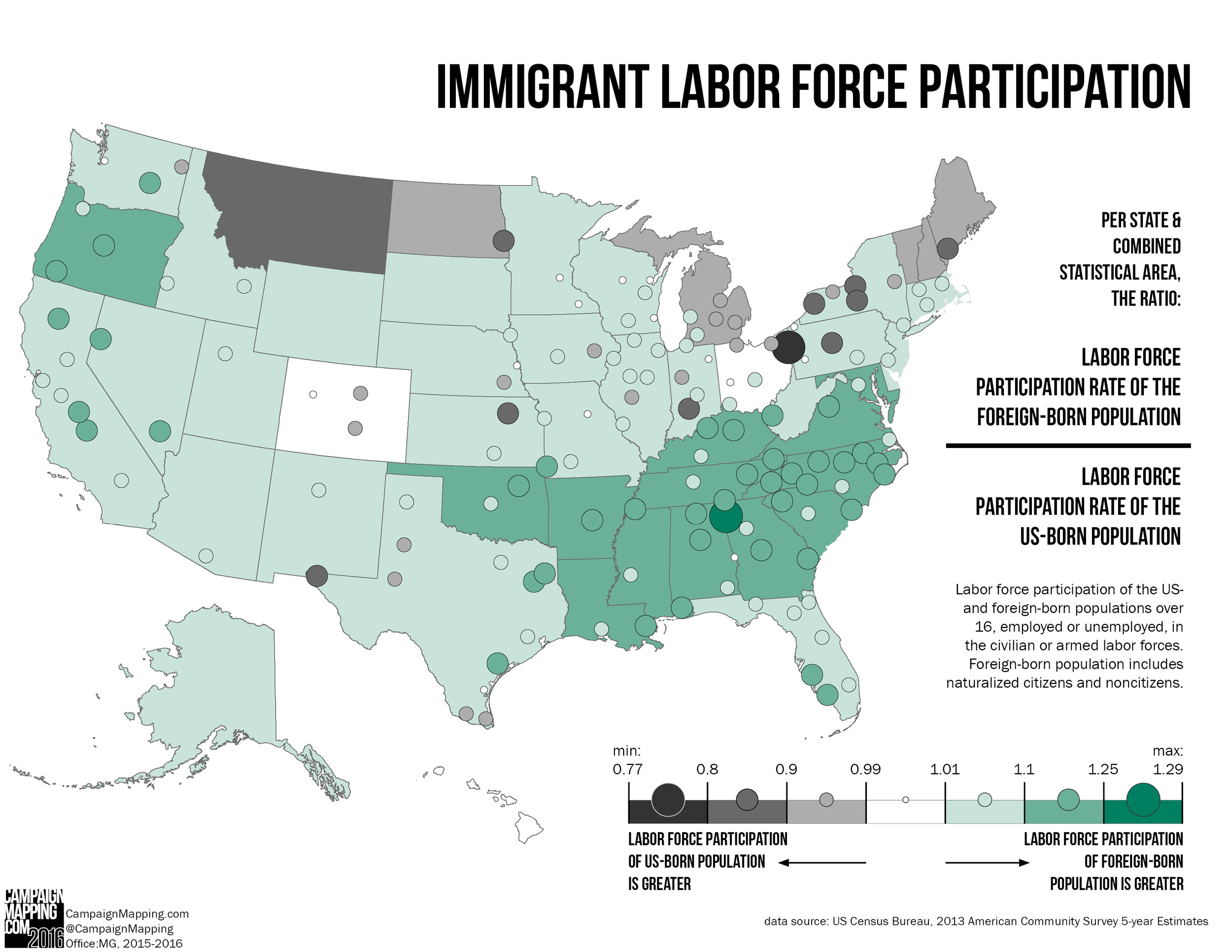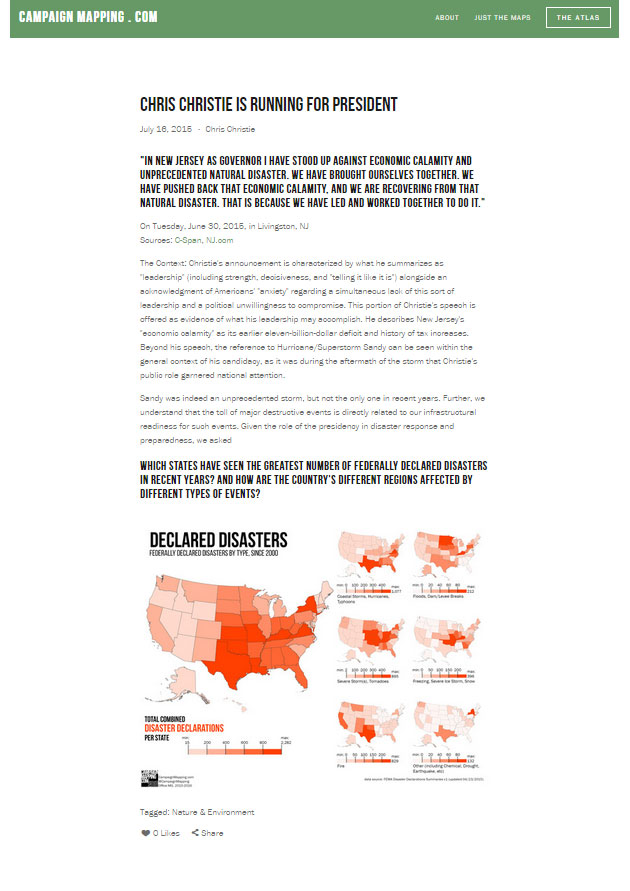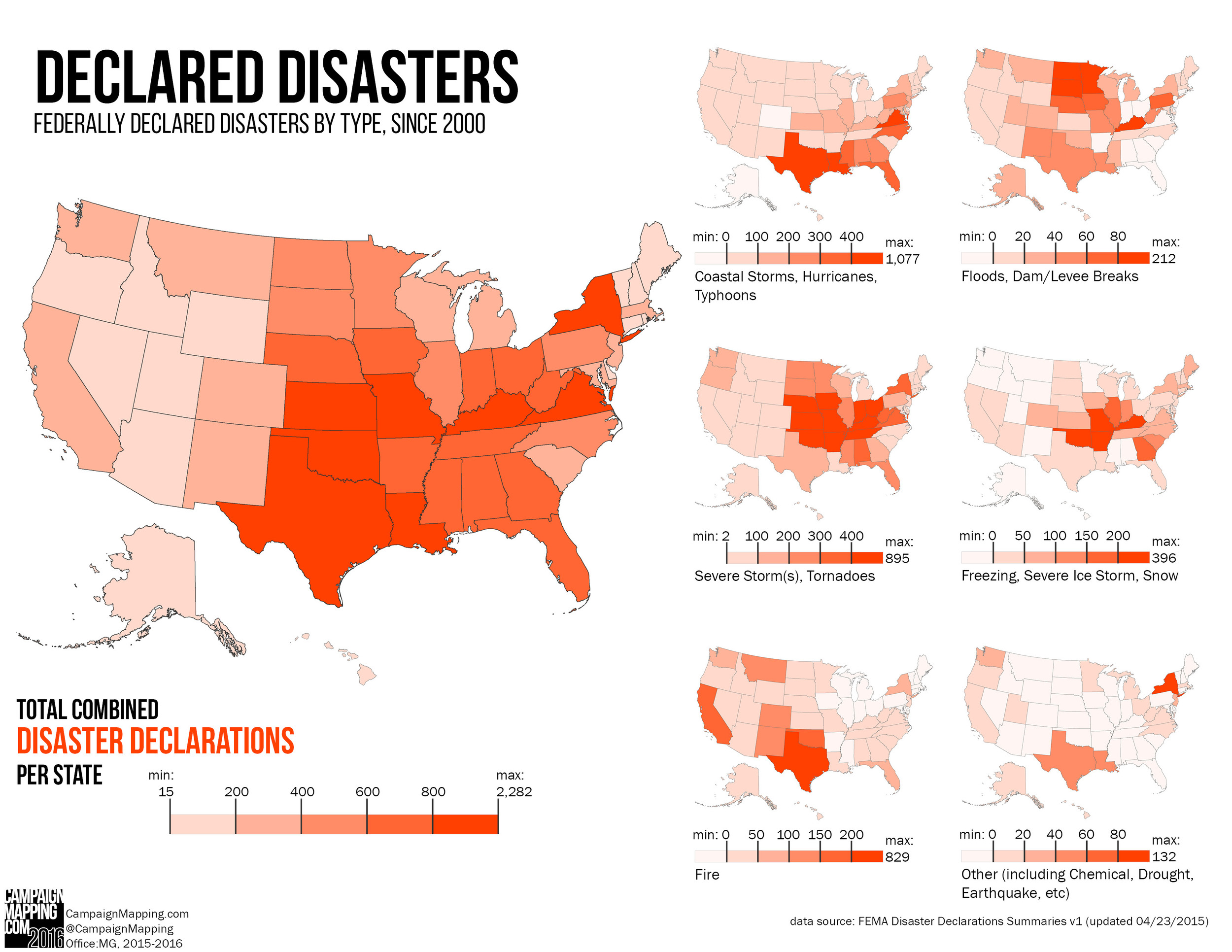Campaign Mapping 2016
with Office:MG (June 2015 - November 2016)
Every four years, Americans hear themselves and their country described by those who would like to lead. Among others, Campaign Mapping asks questions about that description, about the geography of political rhetoric, about the local distributions of national issues, and about how we see ourselves. It is only every four years that Americans collectively elect a candidate to a single, national office—but not together. The order of the primary states matters. The electoral college matters. And thus the regional focus of the issues matters.
Fundamental to the project are the beliefs that, on one hand, the red-and-blue map we see each November is not the only political map of the country and, on the other, that the image of that map might be more divisive than the language used to talk about it. Building on that premise then Campaign Mapping is part research and part action, putting forth a collection of alternative political maps which may also hold the ability to influence how the country understands itself.
From the project website:
A project about candidates & constituents—mapping the country we talk about when we talk about the country.
Campaign Mapping is a nonpartisan ongoing atlas, translating what the 2016 US presidential candidates say into meaningful terms for voters. Over the course of 18 months, we will chart American communities and the issues close to them alongside campaign statements, stump speeches, debate mentions, and press interviews. Along the way, we will be asking a number of questions about how candidates speak to their party bases and how they court other voters. We will be asking which "America" each candidate speaks to and represents, how their messages might change, and how each sees separate issues across the country.
With all the data available to us, voters should have more and better information than sound bytes, platitudes, and generalities. The atlas is not directly about holding politicians to account for the promises they make on the campaign trail. It does, however, seek to hold them accountable for what those statements mean in everyday terms for voters. Our goal is to specify the generalities, clarify the sound bytes, and make real-life meaning out of the platitudes.

